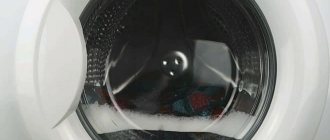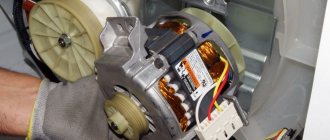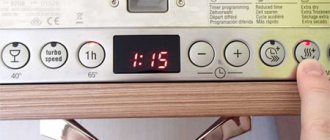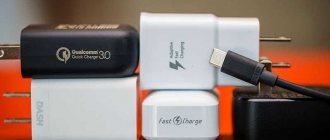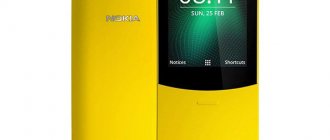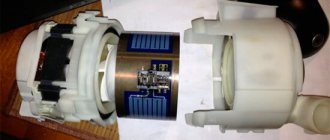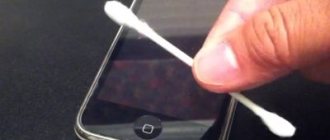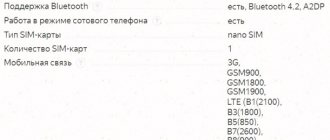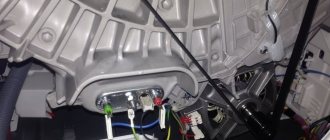What to do with a wet phone? If you dropped your phone in water, you can still save it. To make this possible, and to keep the costs of such repairs to a minimum, it is important to hand over the flooded smartphone to a technician who will take care of it. What to do when there are no service centers nearby? How to restore a wet device? Can a phone fall into water but not break?
What to do if water gets into your gadget? A wet phone does not mean that the gadget needs to be thrown away. A few steps can save a flooded smartphone.
What to do if your phone falls into water - urgent action
If the phone gets very wet or falls into water, the first action is to turn off the power. To do this you need to remove the battery. If the battery is not removable and the phone still responds to touches, you need to turn it off manually.
After disconnecting, you should remove the removable elements of the phone: SIM card and flash drive. On a modern device, you need to use a special paperclip to remove the card. If a protective cover or bumper is installed, this will also need to be removed. After emergency actions have been completed, you can proceed to the drying stage. It is worth noting that complete drying may take several days.
Under no circumstances should you continue to use the product until it is completely dry. If the contacts through which the current passes come into contact with water, oxidation occurs. Oxidation and destruction of contacts does not occur immediately. That is why the device still works for a certain period of time after being removed from the water. The negative impact of liquid can only be reduced by completely cutting off the power.
What to do if you dropped your smartphone into water
Dozens of articles have been written about how to deal with a drowned smartphone. RG Digital takes the liberty of writing another one, collecting obviously true facts and debunking some myths.
Let’s try to describe the procedure to follow if you accidentally “dipped” your gadget.
1. Shutdown
If your smartphone ends up in water, beer, Coca-Cola or any other liquid, the first thing you need to do is turn it off. Android smartphones are turned off by long pressing the power key, iPhone (and iPad, by the way, too) by long pressing the power key and the home button.
This is done because even a weak electrical impulse, which is transmitted through water droplets to the wrong place, can damage the microcircuit (of which there are usually several in a smartphone). The microcircuits are absolutely irreparable; no service center will replace them. Therefore, you will be offered to either throw out the device or replace the entire motherboard. This means that you will lose all data that was not saved in the cloud, and you will part with a serious amount of money.
2. Battery and cards
Secondly, you need to remove the SIM card, battery and memory card from the phone. A removable battery is a big plus, since without a power source no electrical impulses will occur inside the smartphone and will not lead to its damage. Cards can simply deteriorate from moisture - for example, become covered with a coating of oxide - and stop working.
If the back cover of a smartphone can be removed, remove it and leave it in that condition.
3. Rest and sleep
Do not try to immediately turn on the phone and check its functionality. It's like trying to get someone with a broken spine back on their feet. You will only do harm. Why - see point number one.
4. Hair dryer is prohibited
Never try to dry your smartphone with a hairdryer. Even if it seems to you that a stream of air blew right through the gadget and removed all the moisture, don’t believe your feelings. The enemy is cunning and cunning. In fact, the motherboard is full of secluded places where droplets of water can hide for a long time. For example, the space under the chip or between its legs. Some secluded holes or depressions. And no matter how you blow or shake, the microscopic drops will become even more firmly entrenched there.
5. Rice - enemy or friend
Many advisors recommend putting your smartphone in a container with rice and leaving it there for a day or even two. Allegedly, the rice will absorb the remaining moisture remaining inside the device. Is it worth using this method?
The answer is yes, it is, but it is unlikely to be enough. Rice is a kind of emergency resuscitation that does not cure the patient, but helps him wait for a long and serious operation. The fact is that ordinary drinking water contains a large amount of various salts, which will remain on the internal surfaces of the smartphone after it evaporates. How exactly these salts will affect by closing certain contacts - no one can tell you for sure. Perhaps the device will work strangely, and you will decide that the problem is of a software nature, but you will not be able to fix it. Perhaps the microphone suddenly turns off or Wi-Fi stops working.
Despite this, the “rice method” is very popular. If you think that the smartphone has not suffered too much from water, you can try it. By the way, rice can be replaced with silica gel - a substance that absorbs water much stronger than rice. Silica gel packets are found, for example, in boxes of new shoes.
6. Emergency
< However, the rice trick will not work if you have flooded your phone with something other than water. For example, beer or sweet soda. Sugar, dyes and other fillers cannot be blown away by any hair dryer or absorbed by any rice. In this case, do everything described in points one through three, then put the phone in a bag and go to the service center. However, even with a phone that has just been in water, it is better to go there - experts know how to completely remove all salt deposits from the system board and microcircuits using a brush and a special solution.
Just in case, it’s worth clarifying: a service center is a fairly large room where certified specialists work (often this establishment is an authorized center of a large brand), where you are greeted by an employee at the counter, where you are given documents of acceptance with wet seals. A rickety booth with the inscription “Phone repair of any complexity” is not a service center. You can take your phone there only in one case - if you want to get rid of it as quickly as possible.
Drying methods
There are many drying methods. Some of them are highly effective, while others, on the contrary, can worsen the situation. It is not recommended to use forced drying methods if it is not possible to completely disassemble the product.
First of all, it is recommended to remove all visible drops. For this, improvised means are used. Water has a negative effect not only on electrical circuits, but also on the case and buttons.
Hair dryer or vacuum cleaner
Most experts do not recommend using a hairdryer or vacuum cleaner. After a smartphone falls into water, the liquid penetrates almost all internal parts. If you use a hairdryer, it will simply begin to move drops of water across the board and other structural elements, only making the situation worse. When drying with a hairdryer with a stream of hot air, there is a risk of melting the plastic elements.
A vacuum cleaner has the same negative effect, so its use is also undesirable. It is permissible to use it only if you have managed to completely disassemble the smartphone and need to remove liquid from a hard-to-reach place.
Silica gel or rice
Silica gel is a highly effective absorbent. It actively absorbs various liquids upon contact with it. To dry your phone using silica gel, you need to follow these steps:
- Prepare 2 cups of silica gel and a container.
- Pour a little absorbent into the container, place the device and fill it completely.
- Leave the phone for 24-48 hours.
If it is not possible to use silica gel, then rice can be used as an analogue. It is considered a natural desiccant and is used in the same way. When asked what to do when your smartphone gets wet, many advise using rice as an effective absorbent.
Silica gel filler in the form of granules can be purchased at a hardware store. It is worth noting that rice is an excellent alternative and helps to effectively dry the gadget in a fairly short time.
Paper towel
A paper napkin or towel allows you to thoroughly wipe all parts of the smartphone, ridding them of moisture. Both external and accessible internal parts should be wiped. After getting rid of the drops, you should place the phone to dry in a container with silica gel or on a well-ventilated shelf. If a small amount of moisture gets in, a small napkin will be enough to prevent dangerous consequences.
You can also use a microfiber cloth for wiping. This fabric does not leave lint and perfectly absorbs moisture. If the product is wiped with a paper towel, you will need to be careful so that lint does not get into the holes and crevices.
How to dry your phone at home
An absorbent is a substance that draws and absorbs moisture. Whichever method you choose, you will need a container to place both the product and your phone. Drying rules for each method are below:
- Put the phone in the rice. This is the most famous absorbent. The fact that you can dry your phone in rice is not a myth; this remedy is effective. Place the gadget without battery and cover in a bag of cereal for 2-3 days. Turn the device over once every 12 hours.
- Use silica gel cat litter. This product is considered an even better absorbent than rice. To dry the gadget, place it in a container with filler for 48 hours. In this case, the product should completely cover the device. Turn your smartphone over from time to time.
- Dry your phone in silicone shoe balls. An alternative option, similar in effectiveness to the previous one. Draws out moisture in 2 days.
Advice that applies to all methods: check your smartphone every 6 hours and wipe off moisture from its surface with paper napkins. In addition, in case of severe damage, you can replace the absorbent with a new one.
- Pension for combatants in Chechnya
- How to treat circles under the eyes at home
- Will self-isolation be lifted after April 30?
What not to do with a wet phone
To reduce the negative effect of getting the device wet, you should act strictly according to the algorithm. Among the things that should not be done are:
- continue to actively use the product after falling into water;
- put the phone on charge until it dries completely;
- use a hair dryer for forced drying;
- dry the gadget in the microwave, oven or in the sun;
- trying to disassemble a smartphone on your own without having the necessary skills and tools.
Great care should be taken when disconnecting the battery on products with a permanent cover. In this case, you will need a special tool for disassembly (plastic spatulas, small screwdrivers, mediator). After disassembling and drying, all parts and internal components will need to be reassembled in reverse order. It is first recommended to watch training videos on how to disconnect the battery on a specific phone model.
If you follow simple rules, you will be able to significantly increase the likelihood of the smartphone being fully restored, especially if a small amount of liquid has penetrated.
How to save a flooded phone - facts and myths
How to dry a flooded phone? If you start looking for solutions in online forums immediately after the incident, you will likely come across a variety of advice. Some of them may do more harm to your smartphone than help. Much depends on what kind of liquid the smartphone was filled with. In case of flooding with clean tap water, proceed differently than with sea water or orange juice.
You May Like Best Photo Editing Software 2021
- Drying in rice is partly true. In fact, rice has hygroscopic properties, but if you think that it will extract all the moisture from the inside of the smartphone, you are wrong. It will not be able to absorb all the water, let alone viscous liquids. You will only waste time that you can use to effectively save your phone.
- Being located on a radiator or being in the sun is partly true. Even if you take a flooded phone apart and expose it to the sun or place it on a radiator, there is no guarantee that it will survive. Especially if it was filled with sea water or juices containing organic acids. This action can only partially help in the case of clean water, but you should treat this only as preparing the phone for service. You can dry it like this for several hours.
- Cleaning with alcohol is partly true . If you use alcohol, you can use it to clean the visible electronic parts of the phone. The alcohol will help the water partially evaporate and remove the sticky liquid. However, this is not a guarantee that our phone will be saved.
What to do after drying
It is recommended to dry the gadget for at least a day. If you get very wet, it is recommended to wait about 3 days. It is necessary that even small drops have time to evaporate before the smartphone is turned on again. If it fell into water and stayed in it for a long period of time, then there is a possibility of complete failure.
After drying, you can turn on the phone. Before this, it is not recommended to charge it or perform any other manipulations. If the device has successfully turned on and is functioning normally, then drying is considered completed. It is worth remembering that successful switching on does not guarantee trouble-free operation in the future, since after getting wet, oxidation processes can be started. To protect yourself as much as possible, it is recommended to contact a service center and have your phone diagnosed.
What to do if your touch phone gets wet
Before proceeding with any actions, you must immediately turn off the gadget. For phones with a non-removable battery, this can be done by long pressing the lock button. Otherwise, simply remove the battery - this way you will avoid a short circuit, otherwise even a service center will not be able to restore the device’s functionality. Then follow these instructions on how to dry the gadget:
- Disassemble the device. Ideally, each part should be dried separately: remove the SIM and MicroSD cards. Remove the covers, protective glass and back cover. There is no point in unscrewing everything down to the screws; it will be difficult to put the device back together, so if you have a monoblock model (with a non-separable case), stop at removing all inserted cards. Use screwdrivers only if you are sure that you know the gadget's structure well.
- Place the device with the screen facing up. Let gravity do its thing and allow water to accumulate at the bottom of the gadget.
- Absorb moisture with paper towels or napkins where possible. Turn the device slightly so that any accumulated liquid flows out through the holes. At the same time, avoid sudden movements and do not shake the gadget in the hope of drying it faster, otherwise water will flow inside again and flood hard-to-reach places.
Keep in mind that turning on the device immediately after you have wiped the surface is strictly prohibited. The most important and final stage is drying the phone after water. Depending on which method is chosen, this will take a different amount of time.
- The most theft-protected cars and new discounts for car enthusiasts
- First aid for minor back injuries
- New fines for drivers
You can dry the phone by leaving the device in the air for 3–7 days, but this is long and does not guarantee further operation, since radioelements oxidize under the influence of liquid. Use an absorbent substance to help draw water out of the device and dry it faster.
Safety regulations
The main safety rule is not to connect a wet smartphone to the network. In addition, the following recommendations should be observed:
- do not shake your smartphone to get rid of droplets faster;
- use only proven and safe products for drying;
- wait the required amount of time before turning on the phone;
- do not use emergency methods unless necessary.
One of the methods that will help save your smartphone is to use pure alcohol. This option is considered quite dangerous. He has both supporters and opponents. The idea is to re-wet the device in alcohol liquid. The alcohol will absorb the water. The advantage of drying with alcohol is that it is harmless to microcircuits and dries quickly. For the method to work, it is necessary to use the most concentrated solution.
What to do if the phone does not turn on
Very often, for most phones, getting wet becomes the cause of fatal breakdowns. If your Honor smartphone does not turn on after falling into water, you must contact an official service center. It will be able to carry out diagnostics and repairs. It is worth noting that getting into water is not a warranty case for Huawei and most other manufacturers, so you will need to pay for repairs.
If the board, processor and other important elements become very wet, repair may be impossible. In this case, it is recommended to extract all important data and then replace the phone. This method is especially relevant if an inexpensive device has fallen into the water. Even successfully completed repairs do not guarantee stable and long-term operation in the future.
Under what circumstances does wetness most often occur?
Most often, the device gets wet under the following circumstances:
- if you fall into a river, sea or lake while swimming;
- when washing, remaining in the pocket of your pants or shirt;
- when exposed to rain;
- when taking a bath;
- during active recreation.
If you lead an active lifestyle, it is recommended to use a special protective cover when swimming and traveling. This will prevent water from entering the housing. Also, many manufacturers (Huawei, Samsung, Apple, Sony) offer waterproof smartphones that can be immersed in fresh water without consequences. Such devices can be dropped into the bathtub and washed under a direct stream of liquid. In addition, they can be used to dive to shallow depths.
